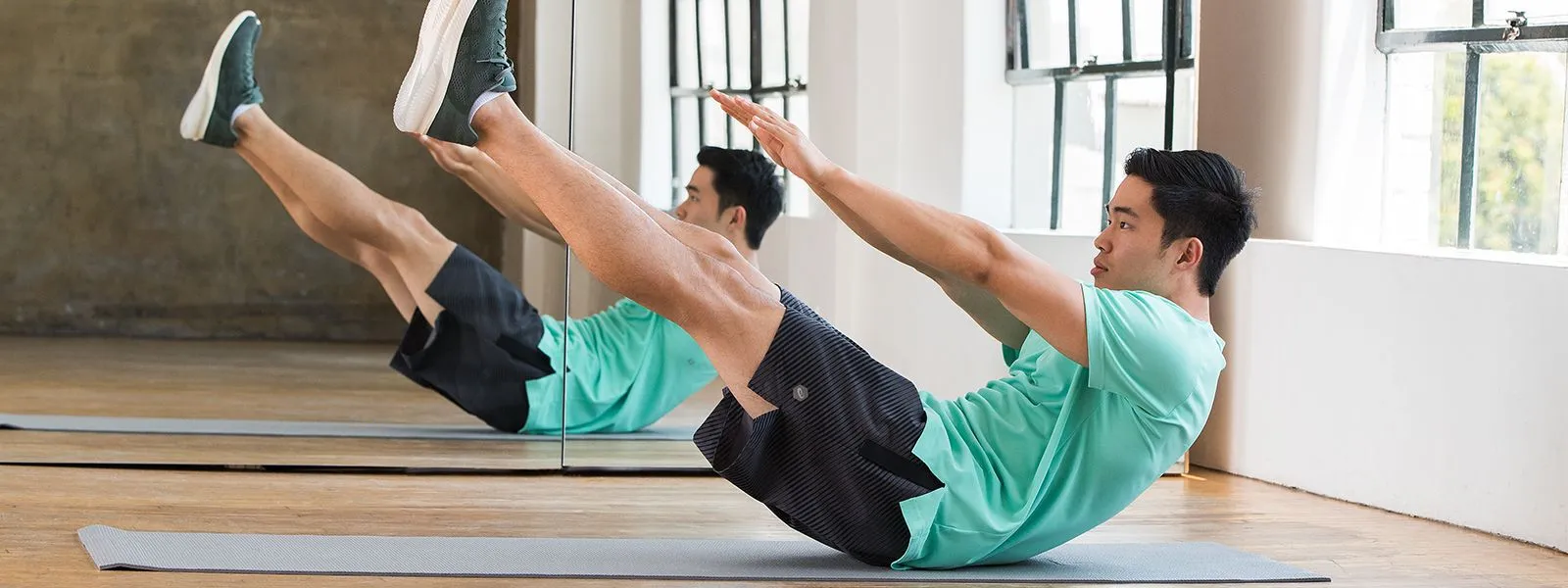
Strength exercises for runners to improve speed
10 de novembro de 2024
At some point, most runners want to find ways to get faster at running. Whether you want to increase your speed at your local park run, beat your PB at a 10k, or get a certain race time at a marathon, you’ll want to build speed training into your routine.
There are multiple methods you can use to get faster at running, including improving your VO2 max, lactate clearance training, and working on your form. But in this article, we’ll be focusing on strength training for runners. Many runners overlook strength workouts when trying to improve their times, but there is robust evidence that they’re some of the best exercises to improve speed.
Let’s learn why strength and weight training for runners can help improve your speed. We’ll then look at some of the best strength exercises for runners that you can build into your training plan.
Why is strength training beneficial for runners?
Over the years, multiple studies have proven that strength exercises for runners can help improve running speed, performance and economy. One meta-analysis (a study of other studies) of strength training for running, found that:
Strength exercises for runners improved running economy by up to 8%. That could potentially shave several minutes off your race times.
In time trials of short, medium and long distance runs, runners who’d done strength training performed 3% to 5% better than people who didn’t do strength training.
Runners who’d done strength training were also up to 3.4% faster when sprinting over short distances.
In addition to improving running speed, studies have also found that strength exercises for runners may reduce injury risk too.
Suggested: Introduction to strength training for runners
Why does strength training improve running performance?
According to experts, there are several reasons why resistance and weight training for runners may improve your performance:
Improves your body’s ability to use elastic energy, so you’re better able to propel yourself forward.
May cause changes in our muscle fibres, including our ‘fast twitch’ muscle fibres that are used in acceleration.
Strength training could cause changes in our brains and nervous systems which means our muscles can apply force more efficiently.
You may get more efficient at using oxygen when doing strength training.
Strength training seems to improve the health of your muscles, bones and tendons, which could reduce injury risk. It may also increase your stability.
Strength training can also make your running motion more efficient.
But doesn’t strength training add bulk?
Many runners are wary of strength training as they don’t want to add bulk. When you do many kinds of strength or resistance training, your muscles will grow (a process known as hypertrophy). Bigger muscles weigh more, so understandably you don’t want to be slowed down.
However, the good news is that if you combine strength training for running with endurance training, your body won’t necessarily add bulk. We still don’t know exactly why this happens, but research suggests that long distance runners who include strength training in their running routines don’t get significantly ‘bulkier’.
Your choice of footwear can also influence your pace. ASICS’ range of fast running shoes are exceptionally lightweight, have energy-returning midsole foam and features like propulsive carbon plates to help you hit higher speeds.
Best strength exercises for runners
If you’re focusing on speed training, then there are many different kinds of strength training that you can build into your routine. Ideally, aim to include at least two strength training sessions into your weekly schedule.
Safety first when doing running exercises to improve speed
Strength and conditioning for runners will mean you train parts of your body that you may not have worked on before. This could introduce a risk of injury as you work muscles that are unused to these more intense activities.
As a simple rule, start low and slow. For example, when working on your calf muscle strength, you could begin by just doing three sets of 10 calf muscle raises. A couple of days later, you could double this. After a week or so, you could progress to weighted calf raises with a 1kg dumbbell in each hand. By going slowly, you’ll build strength with a much lower risk of injury.
Different kinds of strength training for runners
If you’re new to strength training, you might just think of people lifting dumbbells at the gym. This is certainly one way to build strength, but there are many other methods too - many of which require no equipment.
Weight training: As the name suggests, you use weights (dumbbells, barbells, kettlebells etc.) to perform a wide range of lifts.
Isometric training: In isometric training, you perform static poses that work one specific muscle group.
Plyometric training: With plyometric training, you perform hops and jumps that stretch your muscles.
Which muscles should you focus on for speed training?
Runners often focus on leg muscles when looking to increase strength. But running is a full body exercise, and so it’s definitely worth building up your strength in other areas too. Key muscles groups to focus on include:
Hip flexors: Muscles at the front of your hip that lift the leg up when you’re running.
Glutes: Your buttocks help to stabilise your body when running.
Hamstrings: These are three muscles along the back of your upper leg. They help with extending your leg.
Quads: These are muscles on the front of the thigh that get most exercise when you’re running downhill.
Calves: At the back of the leg below the knee, your calves propel you forward and help with pushing off.
Tibialis anterior: On the shin bone, helps you to lift your foot up.
Chest, core and arms: Your upper body muscles help swing your elbows to push you forward faster.
10 kinds of strength training for runners
Try and build some of the following strength training exercises into your routine at least once or twice per week. If you’re completely new to strength training, choose lighter weights or just use your body weight, and gradually build up as you get stronger. Most strength training programmes focus on doing ‘sets’ of ‘reps’ (repetitions). For example, a beginner might do three sets of five reps of a particular exercise, then move onto the next exercise.
Here are some of the best strength exercises for runners:
1. Weighted lunge
Hold kettlebells or dumbbells of equal weight in each hand and stand up straight, facing forward
Step one leg to the front, and bend both knees, so the front knee is upright, and the back knee is facing the ground
Push back up with your front leg to standing
Change feet and repeat
How it benefits you: Builds propulsive force in your legs
2. Box jumps
Face an exercise box or aerobic step
Stand with your feet hip-width apart
Hinging forward, squat down, and then jump onto the box with both feet
Step back and repeat
How it benefits you: These kinds of forceful jumps train your leg muscles to engage faster when racing.
3. Dead lifts
Stand with a slight bend in your knees, and feet spread just beyond shoulder width
Grab onto a dumbbell and hinge down so the dumbbell is just above your ankles
Brace yourself and thrust up to standing
The movement should come through hinging – not a squat movement
How it benefits you: A stronger, more engaged core is essential for rapid sprinting.
4. Reverse fly
Stand with your knees slightly bent, with your feet at shoulder width
Grab a pair of dumbbells and hold them, palms facing one another
Hinge your torso forward by about 45 degrees, keeping your torso and back flat
Lift your arms out to the sides, so they are in line with your shoulders
How it benefits you: Increases strength in torso and arms, which adds power when running fast.
5. Push ups
Get into plank position (if it's too hard, try with your knees on the ground)
Bend your arms at the elbows while engaging your core
Slowly lower yourself so your chin is almost touching the floor
Push back up again and repeat
How it benefits you: Strengthens core and chest muscles, which adds power when running fast.
6. Weighted calf raises
Stand upright with your feet shoulder width apart
Hold a dumbbells of equal weight in each hand
Go onto tiptoes, then return to the ground and repeat
You may want to progress to single leg calf raises, where one leg is bent at the knee and the foot is off the ground
How it benefits you: Improves ankle strength and power in your calves.
7. Single leg tibialis anterior exercises
Sit on a chair with a cuff weight around your foot
Flex your ankle so the toes move up (but without your heel coming off the ground)
Slowly lower the foot, then repeat
How it benefits you: Strengthens your tibialis anterior, and may reduce the risk of shin splints.
8. Nordic hamstring curls
Find a partner or use appropriate machinery/weights at a gym
Start in a kneeling position with something to hold your heels in position
Tilt forward from the knees, then return to the upright position
How it benefits you: Increases hamstring strength.
9. Weighted step-ups and step-downs
Grab a kettlebell and hold it to your chest
Face a box or bench
Step up onto the box with one foot followed by the other, before stepping down
Alternate the leading foot as you repeat the motion
How it benefits you: Works your glutes, quads and hamstrings.
10. Step-downs
Balance with one foot on a step or bench, with the other off the ground to the side
Bend the knee on the bench/step until the heel of the other leg touches the ground
Return to the upright position and repeat
Then, switch legs
How it benefits you: Builds strength in your quads, which is valuable for downhill running.
Other exercises to improve running speed
Besides strength and conditioning for runners, there are several other speed training exercises you can use to increase your overall pace. These include:
Zone 2 training: Zone 2 is long, steady and slow training. Running long distances at this rate helps to build up your aerobic base and endurance, and helps you go faster for longer periods of time. You’ll still need to combine it with higher intensity running, but it provides an effective way of increasing your running speed. For more information, read our Zone 2 guide.
Interval training: Interval training is one of the best exercises to improve running speed. It involves repeatedly running set distances at your highest speed, before pausing to recover briefly, then repeating. Interval helps increase your overall running speed by helping your body increase its anaerobic capacity. For more information, read our interval training guide.
Threshold running: Threshold running is when you run at a ‘comfortably hard pace’, which is typically just below your race time. Threshold running is designed to make your body more efficient at clearing lactate from your muscles, so you can run at a higher pace for longer. Read our threshold running guide to learn more.
Your clothing can help improve running speed too. Learn how compression clothing can help you run faster in our guide, or browse compression clothes for women and men.
Strength and conditioning for runners
Strength training for running can be a powerful way of increasing your speed, while also helping reduce your risk of injury too. As with any new kind of training, it’s essential to start slow with strength and conditioning exercises, but as you get stronger you can add more resistance or weight. By using some of the strength and speed exercises described above, you should start to notice improvements in your overall running time too.
